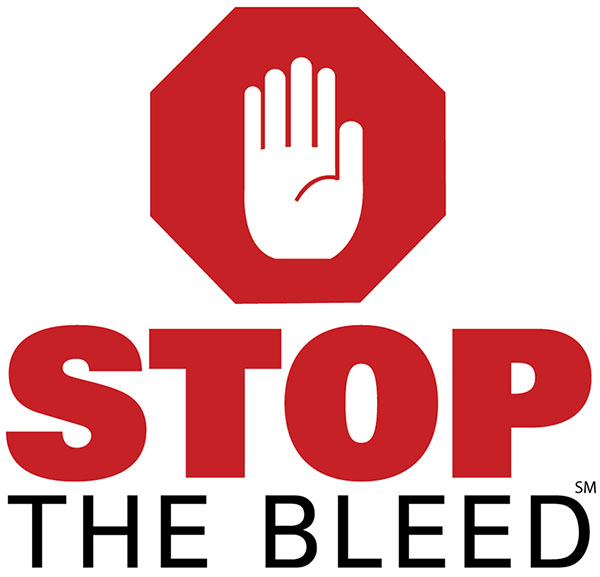Trauma care and prevention during National Trauma Awareness Month
May 8, 2025Categories: Blog Posts
 A traumatic incident can change one’s entire life in an instant. From an elderly person who experiences a fall to a teen involved in a reckless driving accident, such incidents can leave a lasting physical, mental and emotional impact.
A traumatic incident can change one’s entire life in an instant. From an elderly person who experiences a fall to a teen involved in a reckless driving accident, such incidents can leave a lasting physical, mental and emotional impact.
During National Trauma Awareness Month, which has taken place every May since 1988, the American Trauma Society and health care providers—including those at St. Mary Medical Center—work to educate communities about the main causes of trauma and ways to prevent injuries.
According to Meg Ashton, BSN, RN, MHA, CEN, TCRN, director of the Level II St. Mary Trauma Center, the primary cause of trauma is falls among the area’s older adults.
“Bucks County has a large elderly population and, fortunately, a lot of them are actively out there doing things. But balance declines as you get older and many don’t like to use canes or walking devices, even when they’re a little wobbly on their feet,” says Ashton. “So our elderly patients fall, even doing simple things.”
According to Meg Ashton, BSN, RN, MHA, CEN, TCRN, director of the Level II St. Mary Trauma Center, the primary cause of trauma is falls among the area’s older adults.
Oftentimes, says Ashton, their instability is due to heart problems and the anticoagulants or blood thinners that they take. These falls result in high incidents of head injuries.
The second most common cause of trauma is motor vehicle accidents, especially given the large number of curvy roads in Bucks County.
“We have a lot of teen drivers and younger drivers that lose control and hit trees and other cars,” says Ashton.
The short- and long-term effects of trauma vary from patient to patient, with St. Mary offering a multidisciplinary approach to help each individual return to normalcy, or as close to it as possible.
“Our goal is to get any patient that comes to us back to their previous level of functioning. Not always is that immediately evident when they leave us. Sometimes they have to go to rehab to do some additional work. Sometimes their injuries are so severe that they might not return to previous functioning, so then the goal is to get the patient to the optimal level of functioning,” says Ashton. “It’s a combination of physical, mental and emotional health that we try to get our patients to.”
The short- and long-term effects of trauma vary from patient to patient, with St. Mary offering a multidisciplinary approach to help each individual return to normalcy, or as close to it as possible.
Even if a patient comes out of an accident physically unscathed, or with a minor and treatable injury, Ashton explains that they’ll likely have the incident in the back of their mind for some time, if not forever. For any patient who needs it, St. Mary can direct them to trauma support groups that are hosted through the American Trauma Society.
“I think all injuries make you stop and say, ‘Geez.’ An elderly patient who is going about their business, doing fine, they think they’re doing good at 75, 80 years old, and then they have a fall. If that fall didn’t result in a severe head injury, they’re still coming back home feeling vulnerable and now know they can fall,” says Ashton. “They’ll maybe be a bit more aware of using the cane or using the walker, or just being a little bit more cautious of what they’re doing.”
How to stay safe
Throughout Trauma Awareness Month, Ashton wants community members to keep safety and prevention in mind. For older folks, this means using that cane or walker if they feel unstable while getting around. Though they understandably may not want to, this could prevent them from experiencing a life-altering traumatic incident.
As for teen drivers and those who commute on a regular basis, safety and prevention means buckling up.
“Seatbelt usage, when I first started in trauma, was something we were pushing for. And now it’s up to over 91.9% of people use seatbelts. That is huge in preventing injuries,” says Ashton. “Some of our severe auto accidents are because they didn’t have a seatbelt on and they’re thrown out of the window.”
 St. Mary is also a strong supporter of the American College of Surgeons’ Stop the Bleed program. The hospital regularly hosts classes that teach participants how to stop a hemorrhage and care for victims until they can be transported to a trauma center.
St. Mary is also a strong supporter of the American College of Surgeons’ Stop the Bleed program. The hospital regularly hosts classes that teach participants how to stop a hemorrhage and care for victims until they can be transported to a trauma center.
“After some of the mass casualty incidents that have happened, especially the Boston Marathon, the Stop the Bleed program was developed. This is huge,” says Ashton. “We’re teaching normal people that might be at the marathon or might be at some big public event. We hope you’re not, but if you are, hemorrhage is one of the leading causes of death at the scene.”
Care at the St. Mary Trauma Center
For trauma patients who are brought to St. Mary, they can expect a high level of care. As a Level II Trauma Center, St. Mary is evaluated every three years by the Pennsylvania Trauma Systems Foundation to ensure it meets more than 30 standards, including having a board-certified trauma surgeon available in-house 24/7.
“When you have a trauma, they are meeting you at the door. They’re there in the trauma bay to assess your injuries,” says Ashton. “If for some reason you have to go to the OR right away, you go. The quicker we give trauma care, the better the outcome.”
Meanwhile, Level I centers, which typically include university hospitals, analyze the data that’s submitted into the National Trauma Database and determine areas of prevention to focus on. This data found that seatbelts prevent major injuries during motor vehicle accidents and, over the years, that message was disseminated to the public, leading to a record number of commuters buckling up.
“That’s one example of some of the changes that have occurred over the last 20, 30, 40 years. Trauma centers became part of the awareness,” says Ashton. “We could prevent some of these life-altering accidents.”
“When you have a trauma, they are meeting you at the door. They’re there in the trauma bay to assess your injuries. If for some reason you have to go to the OR right away, you go. The quicker we give trauma care, the better the outcome.” — Meg Ashton, BSN, RN, MHA, CEN, TCRN
Ashton is thrilled that efforts around trauma education, awareness and prevention have made great strides since she began working in trauma care at St. Mary a little over 20 years ago. Still, when one of these incidents does occur, she wants the community to know that the trauma staff is ready to jump into action.
“My goal always, since I became directly involved with our trauma program and St. Mary as a trauma center, is that people recognize that it’s more than two bays in the emergency room. It is truly the whole hospital and everybody that works for the hospital that is involved in St. Mary being a trauma center,” says Ashton. “It’s a huge commitment of Trinity and St. Mary to provide this service to the community because there’s not a lot of trauma centers out there. There’s only 52 in the whole state of Pennsylvania.”
